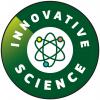Wrocław University of Science and Technology
-
0 comments

What is the innovation?
Magneto-plasmonic nanomedicine multimodality of image guided breast cancer therapy.
What problem does the innovation solve?
Our innovation provides a simultaneous therapy and diagnosis (theranostic) approach for advanced multimodal targeted breast cancer treatment and therapy monitoring to tackle the cancer in any clinical stage. Breast cancer is the most common carcinoma among women worldwide, affecting ˜2.1 million female patients each year. As reported by WHO in 2018 number of breast cancer-related deaths accounts 15% of all cancer deaths among women, what gives ˜630,000 cases. Basing on the European Cancer Information System’ statistics, in 2018 number of newly diagnosed breast cancer incidents across EU was app. 405,000 with estimated death cases at the level of 98,000. ECIS signifies that in 2020 cancer burden will rise to 2.7 million new cases, with women breast cancer predicted to be most commonly diagnosed carcinoma. Hence, breast cancer prevention, earlier diagnosis and effective treatment are important challenges that have a large impact both, on the society and breast cancer therapy market.
How does the innovation solve the problem?
Nowadays, in breast cancer treatment a surgery with full (mastectomy) or partial (lumpectomy) removal of the breast tissues is considered as a primary treatment. In advanced stages an adjuvant treatment merging chemotherapy, hormonal/biological and radiative therapy is applied. We developed a superior breast cancer therapy and diagnosis (theranostic) approach that destroys the cancer cells in vivo. Our innovation proposes the unique solution that enhance a therapy’ efficiency by conjugating magneto-plasmonic nanoparticles with biologically active and therapeutic agents into a multifunctional hybrid nanocarriers (HNC) and simultaneously use 3 therapeutic approaches, such as magnetic hyperthermia, photothermal therapy and direct targeted drug delivery to the tumor. The proposed procedure is minimally invasive, increases the visibility of cancer in multiple imaging modalities and provides a drug release inside the tumor in controlled way, at the right time and dosage needed for a patient.
Is there any other existing cutting edge solution? If so, how does yours differ?
Some earlier inventions available in the US and European Patent Office databases report the non-conventional cancer therapeutic approaches based on nanomedicine. However, these innovations demonstrate only the synthesis of stimuli responsive magnetic and plasmonic nanoparticles co-loaded with a therapeutic agent that may be used to deliver drugs to the tumor cells. They do not discuss a real-time and follow-up therapy and its monitoring. Our photo-magnetic functionalized hybrid nanostructures are synthesised in a unique way and provide a single nanoplatform that may at the same time (i) directly target breast cancer cells, (ii) control dosage of the released therapeutic agent over time, (ii) use simultaneously 3 complementary therapeutic strategies and (iv) few diagnostic modalities to monitor therapy’ outcomes in real-time. The invention is protected by the patent application submitted to the European Patent Office.
Tell us about your team?
The innovation was developed by 2 scientists from Wrocław University of Science and Technology, Poland. Dr Nanasaheb Thorat is MSCA-Fellow at the Department of Biomedical Engineering, WUST. He has published so far 50 peer reviewed journal articles, 3 books, and 6 book chapters, which were cited more than 2000 times. His H-index is currently 29. Dr Thorat is e.g. recipient of H2020-Marie Skłodowska-Curie Fellowship and Japanese Society for the Promotion of Science Fellowship. Dr Joanna Bauer is an Assistant Professor at the same department. She is an experienced researcher specialized in multidisciplinary biomedical projects related to preventive and personalized medicine with over 17 years’ work experience within programs such as DAAD, KBN, ESF, FP6, FP7, H2020. She was a research fellow in a number of scientific institutions worldwide and received many industrial/scientific excellence awards, including e.g. Siemens Research Prize for Outstanding Achievements in Technology and Science.
How big is the market for this innovation?
The Global Breast Cancer Therapy Market was valued in 2018 at USD 19.02 billion and is expected to reach USD 40.47 billion (CAGR 10.6%) by the year 2026. In 2017, the maximum revenue was generated by targeted therapy segment which is estimated to have the largest market share among other therapy types during the forecast period 2019-2026. In 2018 the segment accounted over 70% market share and it is still increasing what emphasis the significance of the new tailored and multimodal cancer therapies implementation, such as the one proposed by us. Therefore, the innovation developed by WUST team is considered to be one of the key R&D initiatives, that can revolutionize the market by providing an effective and patient-tailored breast cancer theranostics, combining targeted personalized treatment with simultaneous imaging diagnostics. Except its possible high social impact, the innovation also has huge market potential as shown by the above market analysis.

